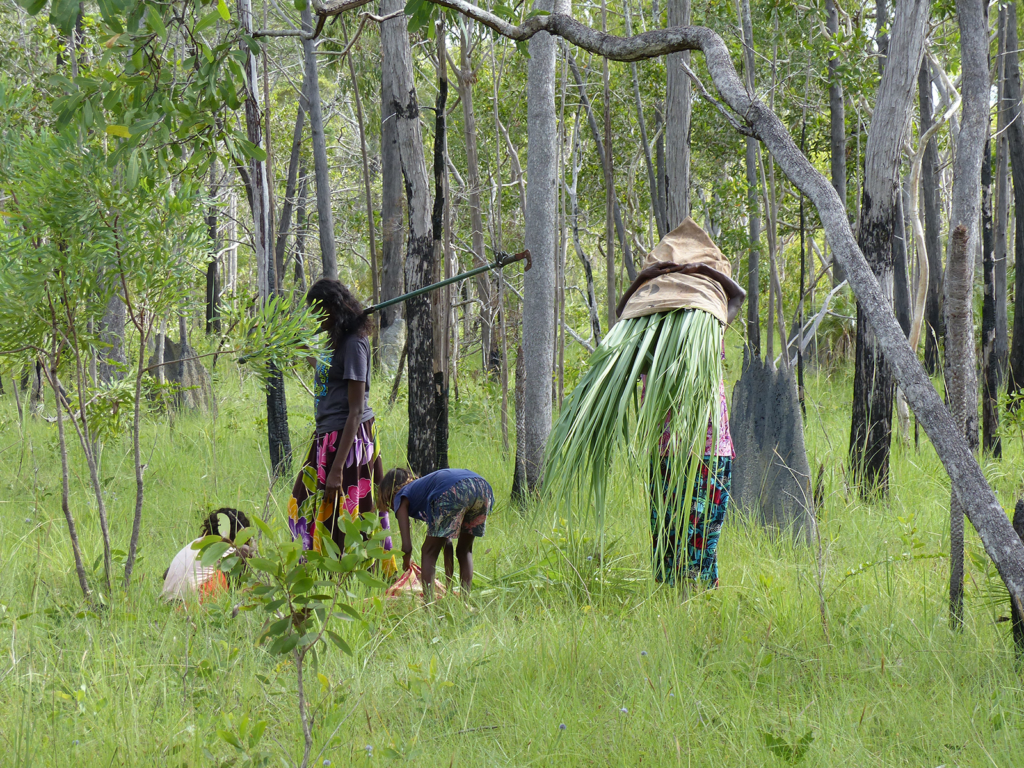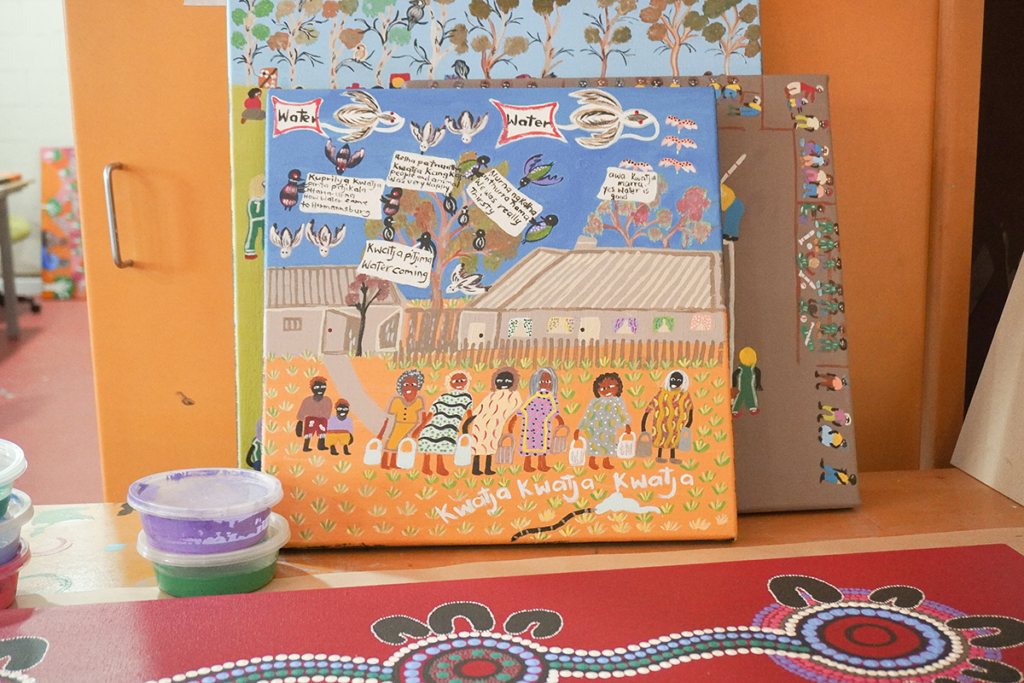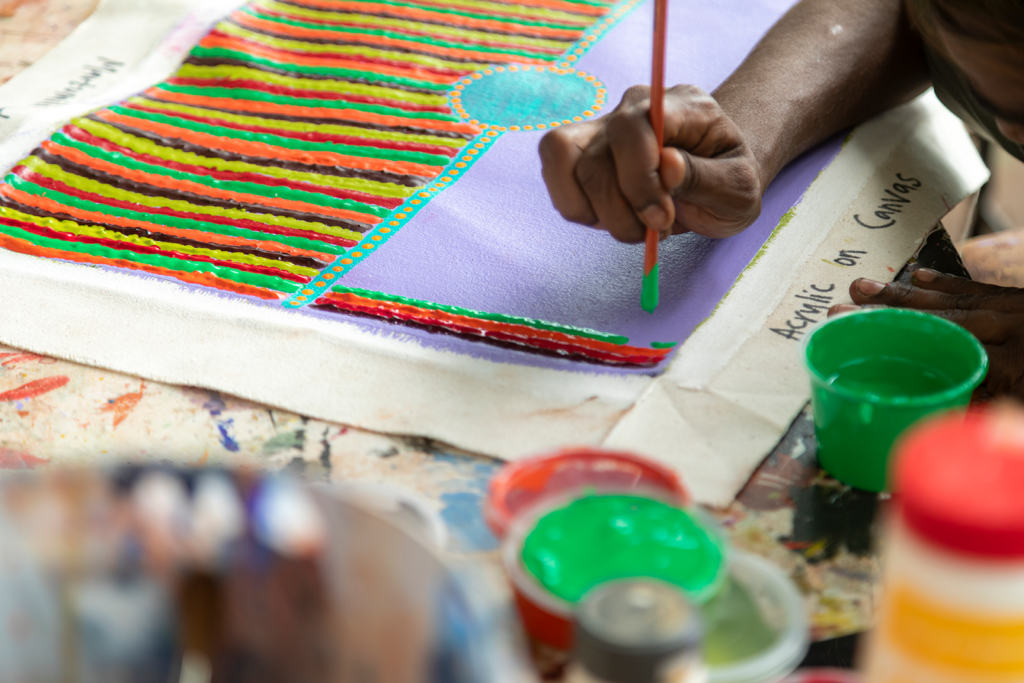UPLANDS is an immersive digital project that has been designed to celebrate Indigenous Art Centres and share Aboriginal and Torres Strait Islander artistic and cultural practices with the world.
This large scale immersive digital mapping project features over twenty remote Indigenous Art Centres, and interviews with over 150 Indigenous artists and arts workers from across the country.
UPLANDS is a project by Agency and has been funded by the Australian Government through the Restart to Invest, Sustain and Expand (RISE) program and the Indigenous Visual Art Industry Support (IVAIS) program.




































































